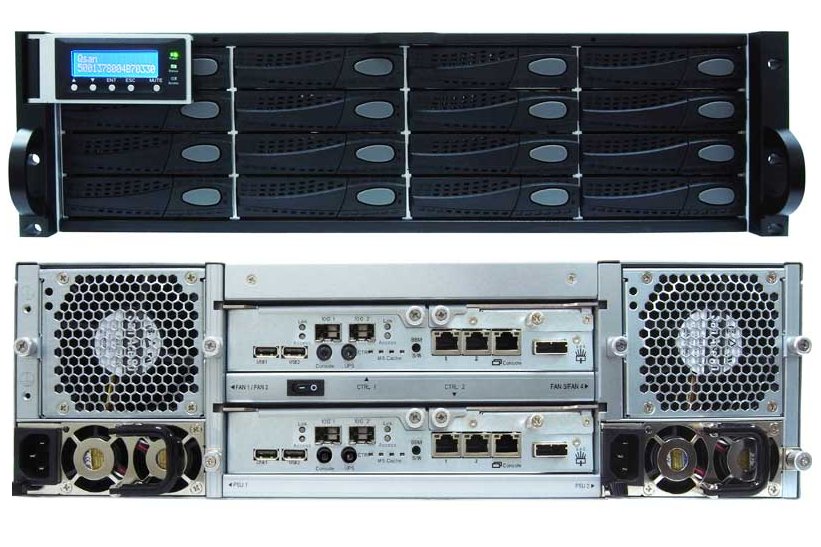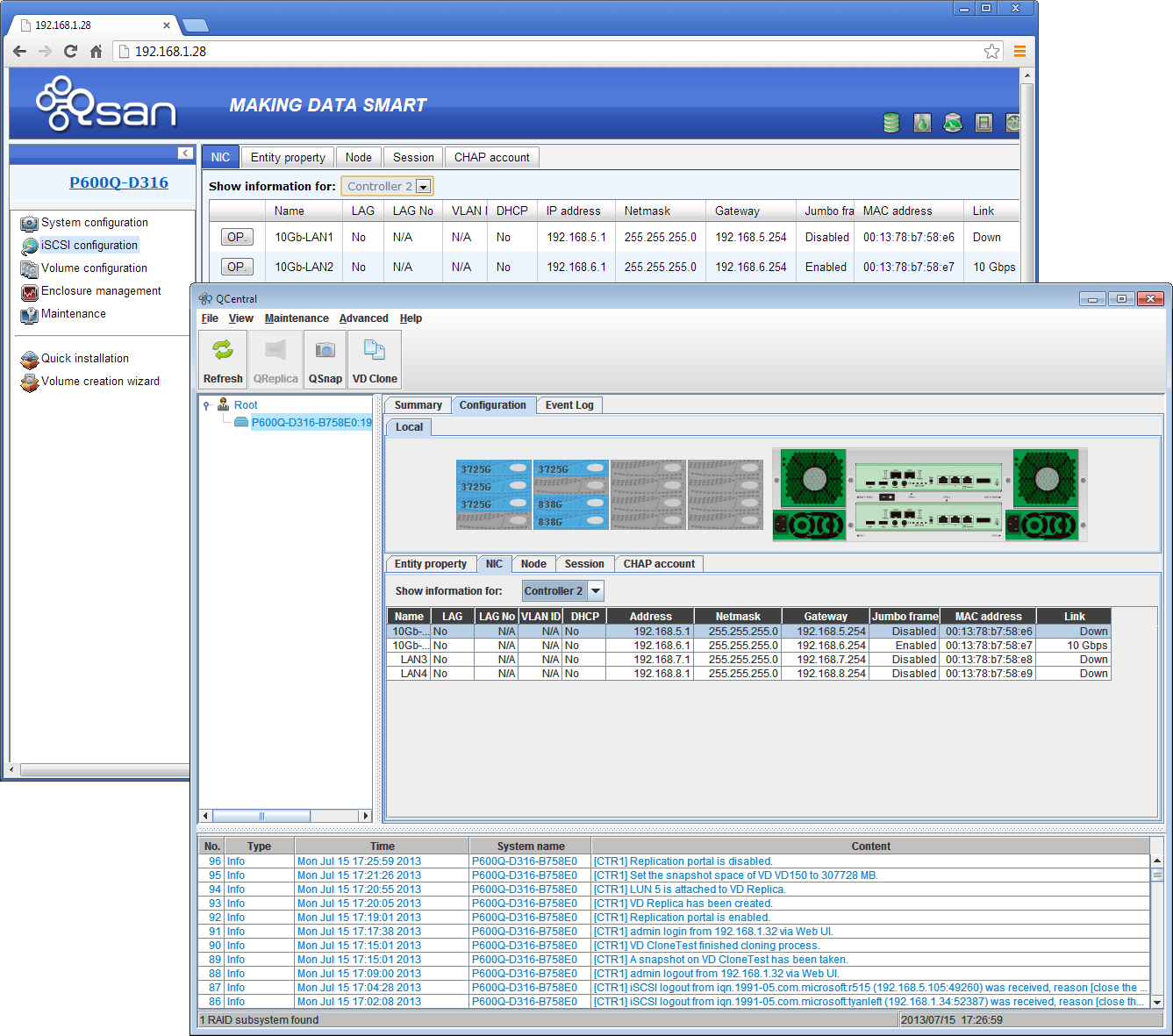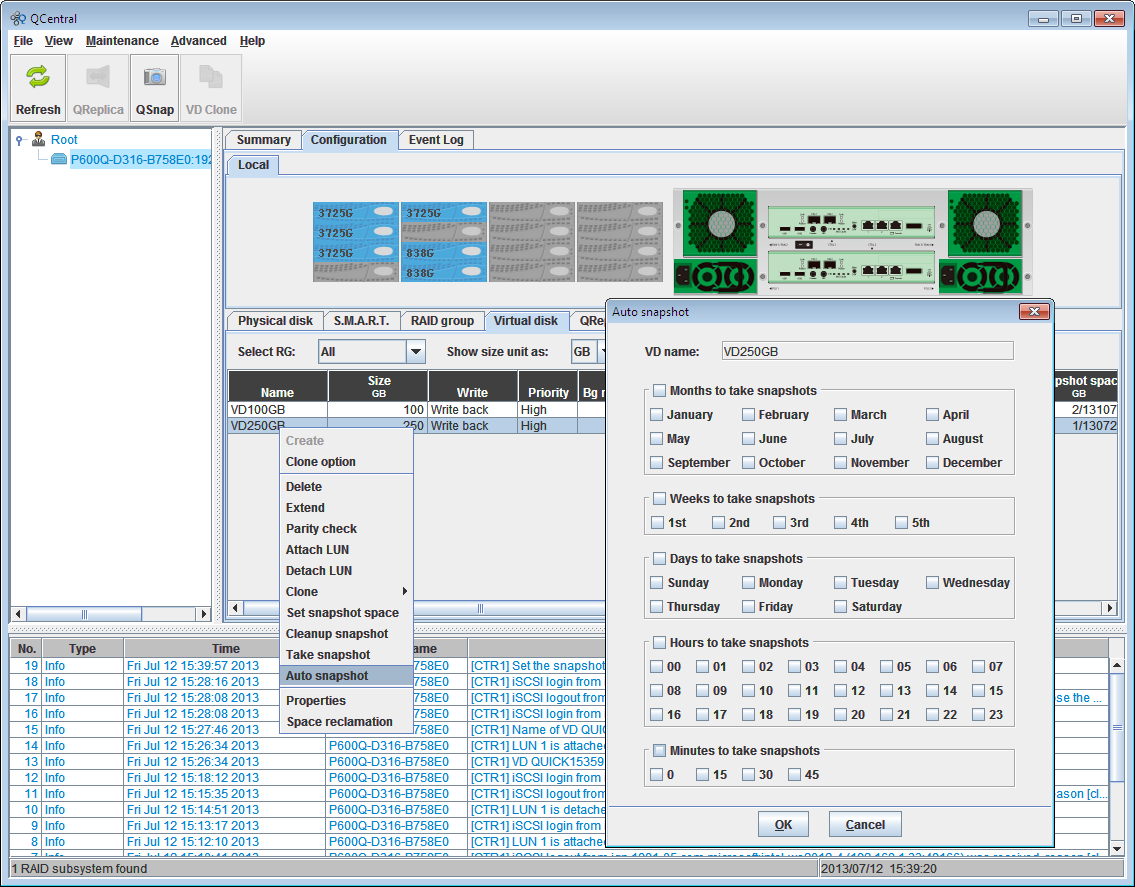Qsan AegisSAN LX P600Q-D316 review
Qsan’s affordable IP SAN appliance has performance, redundancy and expansion high on its agenda.


SATA support does require optional MUX boards but there’s little else to criticise the P600Q-D316 for. It’s an affordable IP SAN solution with high levels of redundancy, good expansion potential and top performance over 10-Gigabit.
-
+
Good value; Top performance; High levels of redundancy; Big expansion potential
-
-
SATA HD support requires additional hardware

Qsan offers a wide range of IP SAN products with a sharp focus on value and the AegisSAN LX family extends this philosophy to the mid-range and enterprise markets.
The P600Q-D316 on review focuses on redundancy as a top priority thanks to the dual controllers supporting active/active mode and cache mirroring, extensive RAID array choices and plenty of expansion potential.
Supplied to us by CMS Distribution, the P600Q-D316 doesn't have a single point of failure as it comes with dual hot-plug 500W power supplies and fan modules. It's also 10-Gigabit (10GbE) ready with each controller sporting dual Gigabit and 10GbE SFP+ data ports.
Expansion potential looks good as each controller provides a 6Gbits/sec SAS port. With Qsan's J300Q JBOD disk shelves in the mix you can go up to 192 drives and these units also have dual everything so redundancy is extended throughout the storage daisy chain.
The price we've shown is for a diskless unit and the P600Q-D316 has room for sixteen hot-swap SAS hard disks. You can use SATA drives as well but you'll need to purchase Qsan's optional 6G MUX board for each one. These are fitted to the drives prior to insertion and allow the backplane to support a mix of SAS and SATA.

You can use a web browser or Qsan's own QCentral utility to manage and configure the appliance
Installation
Sign up today and you will receive a free copy of our Future Focus 2025 report - the leading guidance on AI, cybersecurity and other IT challenges as per 700+ senior executives
Each controller has a dedicated management port so redundancy is extended to these functions. You have two choices for access as you can use a web browser or Qsan's own QCentral utility which is designed to manage multiple appliances.
The web interface is fairly basic but does provide easy access to each function. QCentral is as easy to use and you can access various functions simply by clicking on components in the appliance graphic.
For testing we loaded up a quartet of Western Digital 4TB SAS 6Gbits/sec hard disks. The drive trays also accept SFF drives so we added a couple of 900GB WD Enterprise drives as well.
You start by creating RAID Groups (RGs) and Qsan supports an extensive range of array types including Qsan's N-way mirroring where the array can contain multiple mirrors for N-1 failover. During RG creation you'll also meet Qsan's QThin feature where you can enable thin provisioning on a per-RG basis.

Snapshots of selected VDs can be taken manually or run as often as every 15 minutes
Dave is an IT consultant and freelance journalist specialising in hands-on reviews of computer networking products covering all market sectors from small businesses to enterprises. Founder of Binary Testing Ltd – the UK’s premier independent network testing laboratory - Dave has over 45 years of experience in the IT industry.
Dave has produced many thousands of in-depth business networking product reviews from his lab which have been reproduced globally. Writing for ITPro and its sister title, PC Pro, he covers all areas of business IT infrastructure, including servers, storage, network security, data protection, cloud, infrastructure and services.
-
 Trump's AI executive order could leave US in a 'regulatory vacuum'
Trump's AI executive order could leave US in a 'regulatory vacuum'News Citing a "patchwork of 50 different regulatory regimes" and "ideological bias", President Trump wants rules to be set at a federal level
By Emma Woollacott Published
-
 Microsoft Excel is still alive and kicking at 40 – and it's surging in popularity as 82% of finance professionals report ‘emotional attachment’ to the spreadsheet software
Microsoft Excel is still alive and kicking at 40 – and it's surging in popularity as 82% of finance professionals report ‘emotional attachment’ to the spreadsheet softwareNews A recent survey found Gen Z and Millennial finance professionals have a strong “emotional attachment” to Microsoft Excel
By Emma Woollacott Published
-
 LastPass hit with ICO fine after 2022 data breach exposed 1.6 million users – here’s how the incident unfolded
LastPass hit with ICO fine after 2022 data breach exposed 1.6 million users – here’s how the incident unfoldedNews The impact of the LastPass breach was felt by customers as late as December 2024
By Emma Woollacott Published
